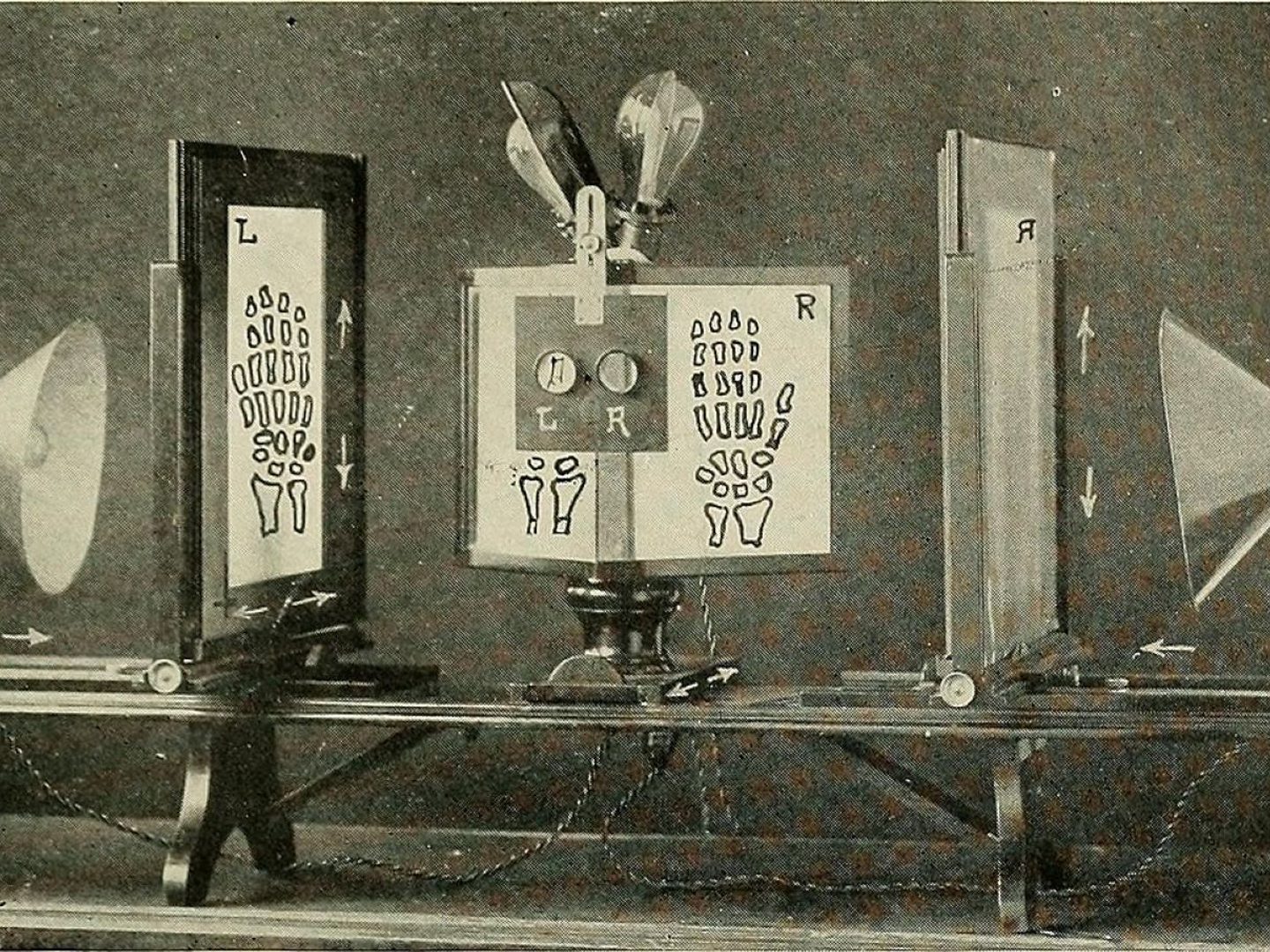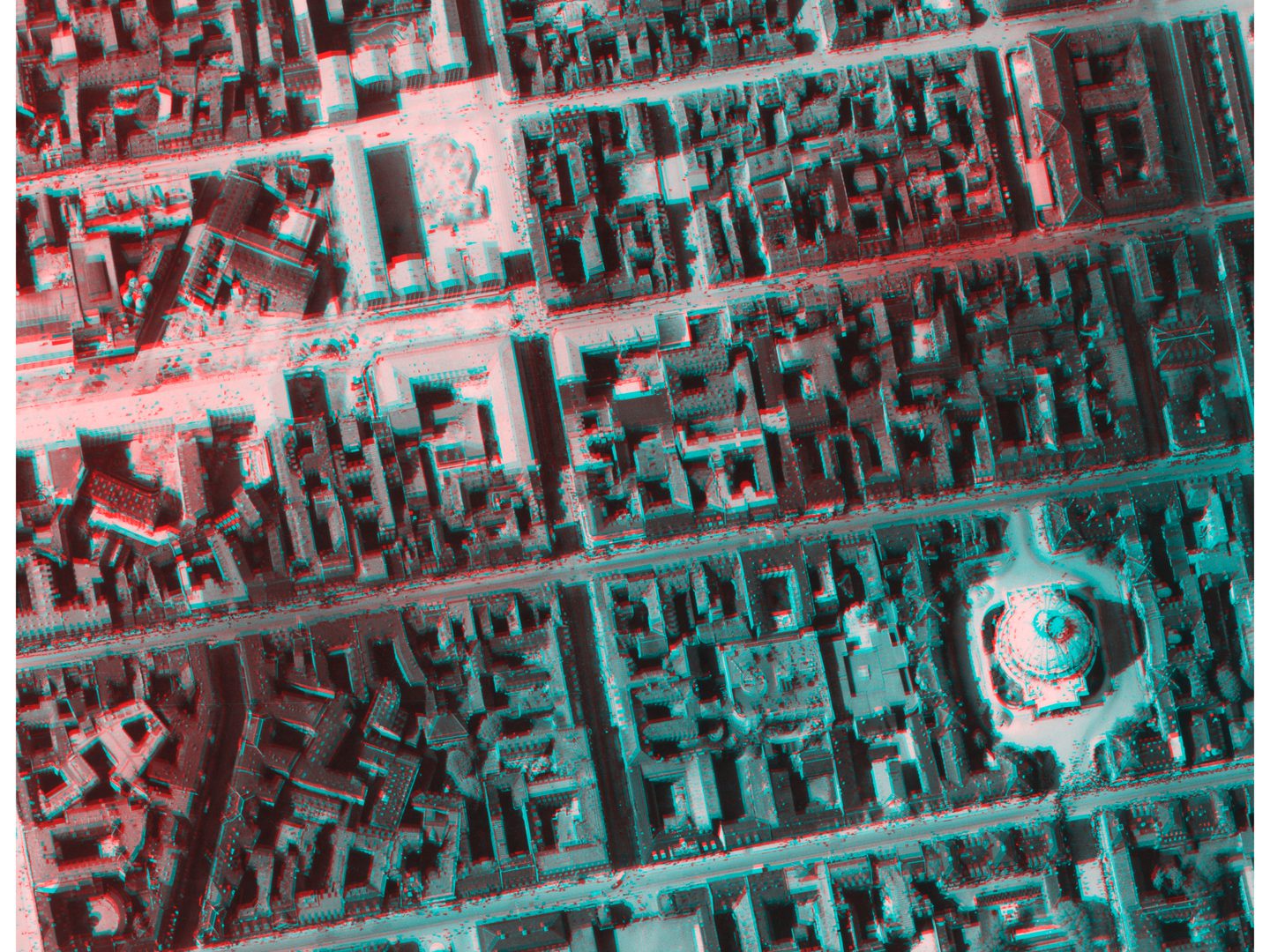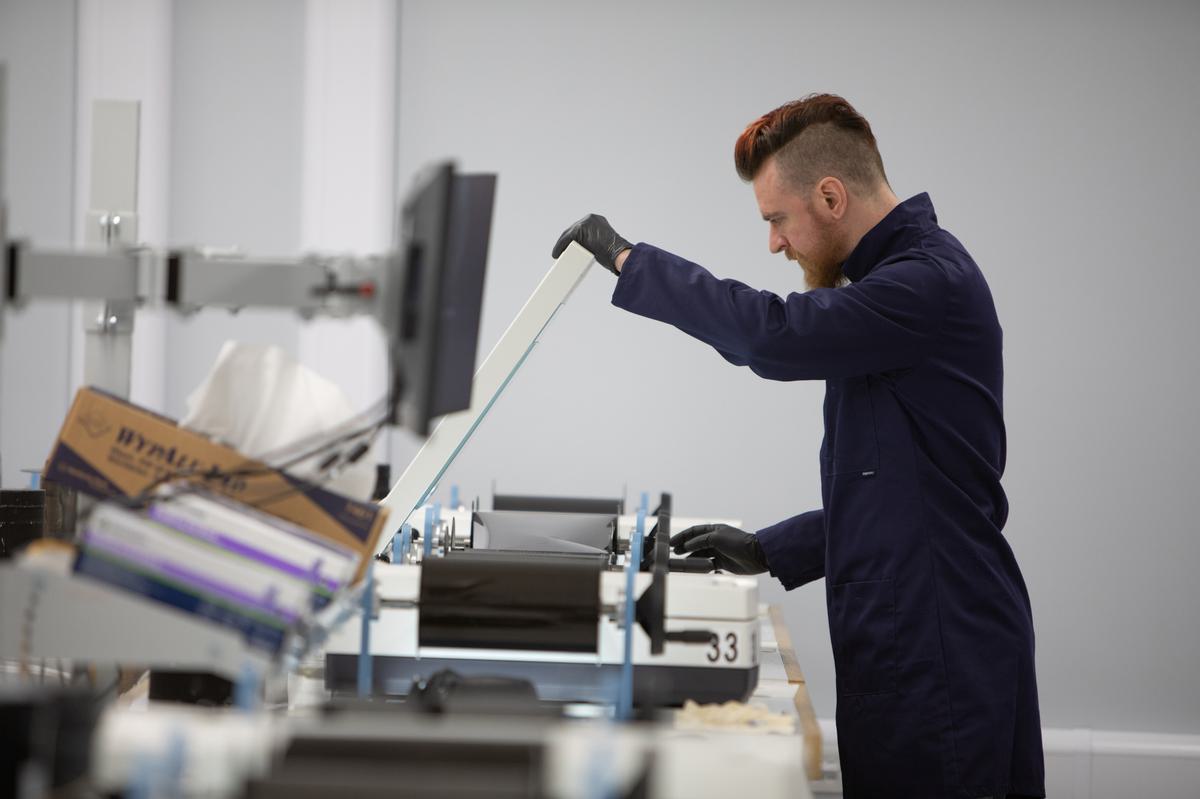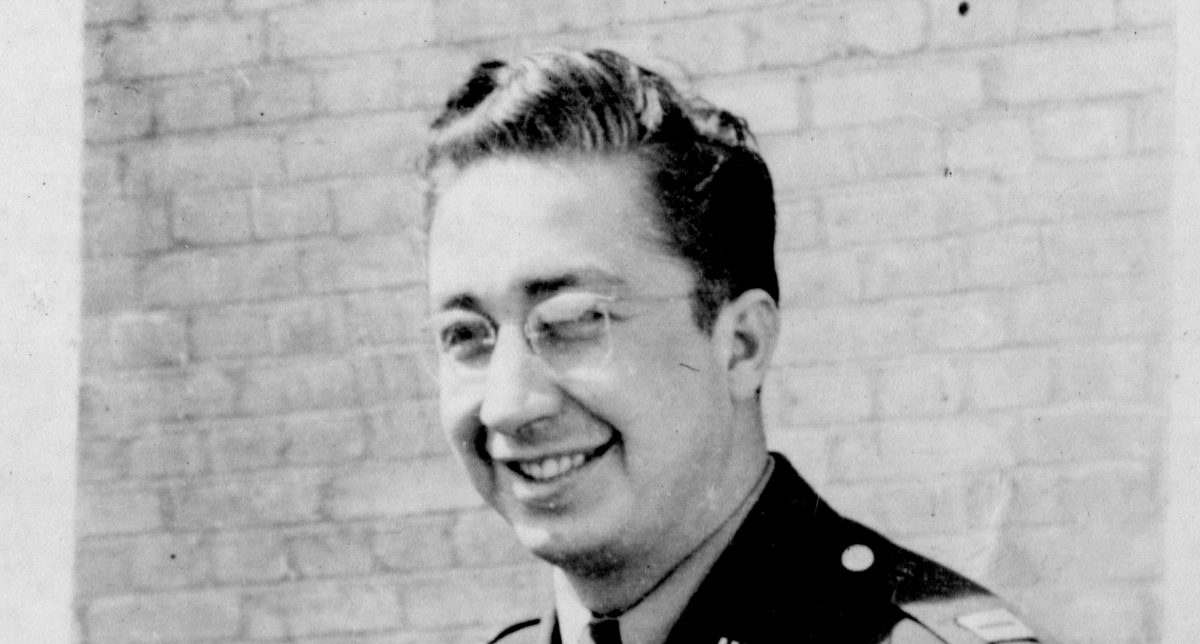Aerial Photography and the Science of Stereoscopy

Stereoscopes and binocular vision have been of great interest to scholars, artists and thinkers for hundreds of years. Non-photographic stereoscopic images were first made to try and imitate and understand binocular vision. With the advent of photography, they became a way to view two dimensional photographs with greater immediacy and vividness.

Sir Charles Wheatstone's reflecting stereoscope, illustration by Mihran Kassabian, with example for x-ray viewing applications, 1910. Credit: Wikimedia Commons.
The History of Stereoscopy
The first stereoscope was developed in 1832 by Sir Charles Wheatstone, around the same time as the first photographs were being developed. Through much of the nineteenth century, stereoscopes were used as a game for entertaining party guests. The technology was quickly married to photography in the mid-nineteenth century, with the viewing of stereocards becoming a popular form of entertainment.

Holmes Stereoscope, illustration by Carl Buergerniss, 1940. Credit: Index of American Design via Wikimedia Commons.
However, different iterations of the stereoscope were soon developed for practical applications ranging from anatomy to astronomy. They were particularly useful in illustrating ideas to students. Stereoscopic images also became a vital tool in medicine – being used to study X-ray images – and in surgical photographs to identify the location of foreign bodies like shrapnel or bullets. This made stereoscopic images particularly useful during wartime, although it is not the only way in which the technology proved useful in a military setting.

A Photographic Interpreter using a stereoscope to analyse aerial photographs of railway infrastructure. Image courtesy of the Medmenham Collection, MC MH 047.
Stereoscopy and Aerial Photography
The most widespread application of stereoscopy came with the increased use of aerial photography in the twentieth century. If two aerial photographs overlap by sixty percent or more, they can be viewed in three dimensions using a stereoscope. During the Second World War, when Photographic Reconnaissance was undertaken extensively by the Allies, Photographic Interpreters constantly utilised stereo imagery to identify and analyse strategic targets and camouflaged sites on the ground.
Outside of military applications, aerial images viewed in stereo can be used for archaeological and geological research as well as mapping and photogrammetry. The process of rectification makes use of stereoscopy to remove the visual distortion inherent in aerial images before they can be used in map-making. It establishes how features such as roads, rivers, and mountains truly appear from above.

3D anaglyph of Marmorkirken, Copenhagen, Denmark, photographed during the Liberation Day parade on 12 May 1945. Collection: ACIU, Sortie: 106G/LIB/0017, Frames: 3065 and 3066 (12 May 1945)
Stereoscopic Images at NCAP
Almost all the images cared for by the National Collection of Aerial Photography can be viewed in three dimensions. Our Second World War collections illustrate how stereoscopy was used in the vital interpretation of reconnaissance photographs, while photographs from the Directorate of Overseas Surveys collection demonstrate how stereoscopy and photogrammetry are used in large scale mapping projects. This Stereoscopy Day is the perfect time to celebrate the important role stereoscopy plays at the National Collection of Aerial Photography.


